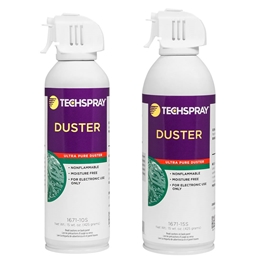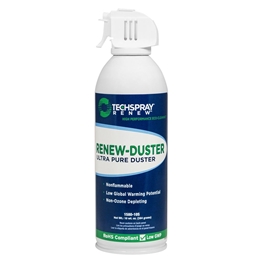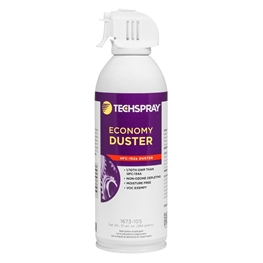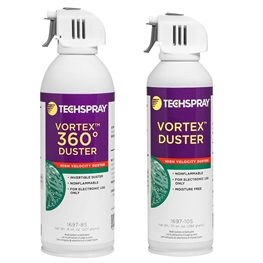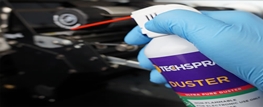Blast Dust & Dirt Off Sensitive Electronics
Techspray Duster (commonly called "canned air", "compressed air duster", and "dusting gas") blows away dust, microscopic contaminants, lint, metallic oxide deposits and other soils that can damage sensitive electronics. When these contaminants get in the way of vents or fans within the device, they create a build-up which leads to overheating and/or shortages.
Techspray dusters do not contain additives that can contaminate sensitive electronics. Retail dusters generally have bitterant added to prevent huffing. This same bitterant can lead to unwanted and potentially harmful residues that can build up over time.
Choose the air duster propellant that best meets your needs:
- HFC-134a – Most common for industrial applications because it is nonflammable. Intended for cleaning energized circuits.
- HFC-152a – Most commonly available duster in consumer retail because it is less expensive than HFC-134a. It is flammable, and will ignite when concentrated (i.e., in liquid form) and exposed to a spark or flame. It has one-tenth the global warming potential (GWP) of HFC-134a.
- HFO-1234ze – A newer propellent that is nonflammable, and a much lower GWP than either HFC-134a and HFC-152a. Ideal for ISO-14000 programs.
For more information, check out our Everything You Need to Know About Air Duster …But Were Afraid to Ask.
Invertible
Spray Force
Flammability
Environmental & Safety
Applied Filters
FAQ's
For more information, check out "Everything You Need to Know About Air Duster …But Were Afraid to Ask"
The can of duster must be held in an upright position when spraying. Do not tilt can more than 40 degrees during spraying operation or shake during use. Before use, press actuator to clear valve of any liquid product. Extension tube can be used to remove dust in tight areas. Use short bursts to prevent cooling of can.
There are different options for duster propellant: HFC-134a – Nonflammable, most common for industrial applications when spraying energized circuits because of the risk of a spark lighting a flammable material. It is under close scrutiny because it has a Global Warming Potential (GWP) of 1400, so 1400 times the impact of CO2. HFC-152a – Most commonly available duster in consumer retail because it is less expensive than HFC-134a. It is flammable, and will ignite when concentrated (i.e. in liquid form) and exposed to a spark or flame. HFO-1234ze – This is a newer, nonflammable material introduced in the last 10-years as a very low GWP alternative (<1) to HFC-134a. It is non-flammable and is almost indistinguishable from HFC-134a when sprayed, but unfortunately at a much higher price.



